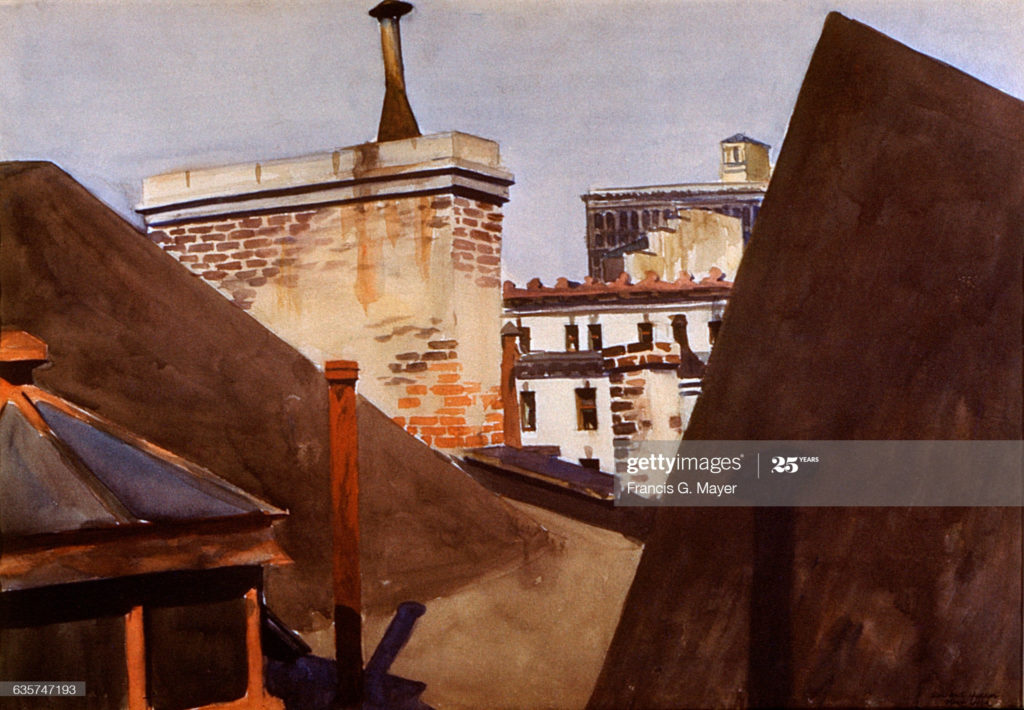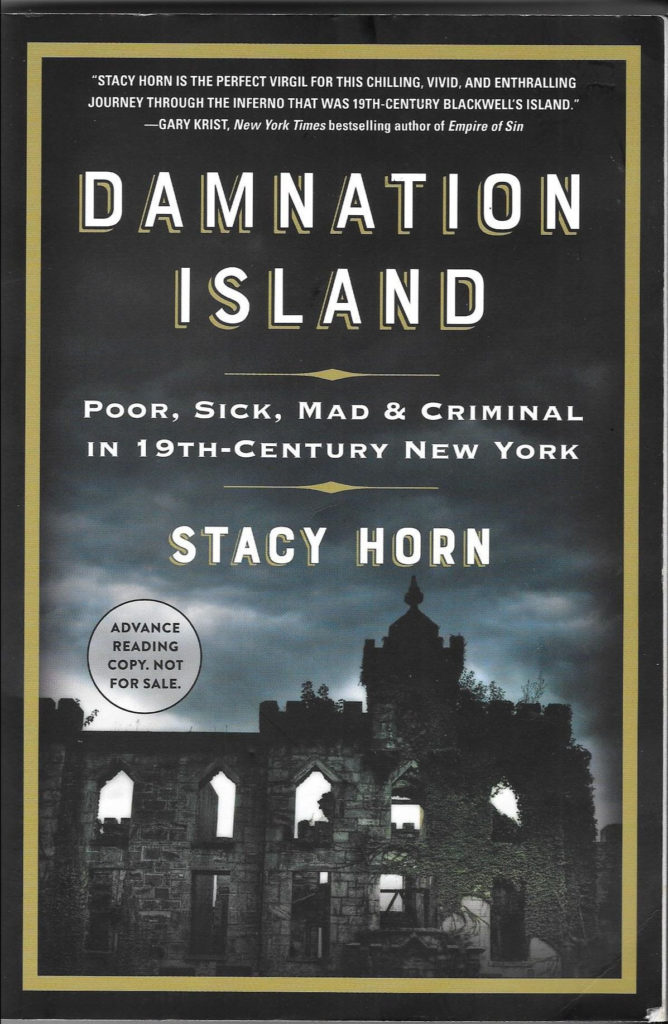Wednesday, September 23, 2020 – WHERE HOPPER LIVED FOR SO MANY YEARS


Wednesday, September 23, 2020
OUR 164th ISSUE
OF
FROM THE ARCHIVES
EDWARD HOPPER AT HOME
ON
WASHINGTON SQUARE
PEOPLE IN THE SUN

Edward Hopper, People in the Sun, 1960, oil on canvas, Smithsonian American Art Museum, Gift of S.C. Johnson & Son, Inc., 1969.47.61
In Edward Hopper’s People in the Sun, five men and women sit on a terrace beneath a vast blue sky. Stark contrasts and cool light emphasize the eerie expressions, frozen poses, and formal attire of the visitors. Hopper distilled his memories of tourist destinations in the American West to create a scene that is strangely familiar but nowhere in particular. The precisely staggered deck chairs and bands of color indicating mountains, sky, and grass create an abstracted environment that veers between a real view and a stage set, as if Hopper were replaying a silent film of a family vacation. People in the Sun suggests a crowd of tourists who feel obliged to take in a famous scenic view, but do so with little pleasure. The canvas may reflect Hopper’s discomfort in the West, where he found himself unable to paint with his usual enthusiasm when confronted by the harsh light and monumental landscapes.
CAPE COD MORNING

Edward Hopper, Cape Cod Morning, 1950, oil on canvas, Smithsonian American Art Museum, Gift of the Sara Roby Foundation, 1986.6.92
In Cape Cod Morning, a woman looks out a bay window, riveted by something beyond the pictorial space. She is framed by tall, dark shutters and the shaded façade of the oriel window. The brilliant sunlight on the side of the house contrasts with the blue sky, trees, and golden grass that fill the right half of the canvas. The painting tells no story; instead, the woman’s tense pose creates a sense of anxious anticipation, and the bifurcated image implies a dichotomy between her interior space and the world beyond. Modern American Realism: The Sara Roby Foundation Collection, 2014
Edward Hopper is one of America’s best known and most time-honored artists. A realist who was internationally acclaimed during his lifetime, Hopper painted characteristic American subjects, from movie theaters and restaurants to New England lighthouses. The still pose of the figure and dramatic light and shadow in Cape Cod Morning evoke tense anticipation in an isolated place.
Smithsonian American Art Museum: Commemorative Guide. Nashville, TN: Beckon Books, 2015.
RYDER’S HOUSE

Edward Hopper, Ryder’s House, 1933, oil on canvas, Smithsonian American Art Museum, Bequest of Henry Ward Ranger through the National Academy of Design, 1981.76
HOUSE IN ITALIAN QUARTER

Edward Hopper, House in Italian Quarter, 1923, watercolor on paper, Smithsonian American Art Museum, Gift of Sam Rose and Julie Walters, 2004.30.7
WHITE RIVER AT SHARON

Edward Hopper, White River at Sharon, 1937, watercolor and pencil on paper, Smithsonian American Art Museum, Gift of the Sara Roby Foundation, 1986.6.41
Hopper painted White River at Sharon in September 1937, when he and his wife were visiting the farm of friends in Vermont. The distinctive light of early autumn suffuses a landscape that at first glance seems untouched by man. But Hopper believed that evidence of the human presence in the natural world reflected the reality of contemporary life. Careful examination reveals a road in the center of the composition and a railroad embankment at the upper right.
HOPPER’S NYC STUDIO

FROM ARCHITECTURAL DIGEST:
Inside Edward Hopper’s Private Greenwich Village Studio (C)
Tour the rarely seen, perfectly preserved aerie where the artist created many of his famous works
When Edward Hopper was 31 years old, he moved into the small Greenwich Village space where he would both work and live until his death, at age 84. With a skylight providing the rich natural light he adored and both a roof and window looking out onto Washington Square Park, the setting was ideal for both his work and that of his wife, the painter Jo Hopper, who worked alongside him. While the building, part of a row of 13 Greek Revival homes lining Washington Square Park North, has since been acquired by New York University, the top-floor studio remains much as it was.
Overseen by the NYU School of Social Work, whose offices occupy the rest of the building, it is available for view by appointment.

It’s easy to feel you are seeing the space much as Hopper did. Though the bedroom and bathrooms have been converted, the studio space still houses Hopper’s handmade easel and a printing press, the spokes of which he used as a hat rack, as seen in Berenice Abbott’s 1948 photo of him in the studio. Also still visible are the large skylights that pour light into the space and the double windows looking out onto the park, as well as a portrait of Edward by Jo. If the area feels spartan, that’s much in keeping with the way Hopper lived and worked. “It’s not like he was a beatnik and having all of his buddies over and they were talking about art. He was a very introverted, very private painter,” says Jennifer Patton, executive director at the Edward Hopper House in Nyack, New York. “Obviously he painted looking out the window. There are several drawings and paintings that are of Washington Square Park, and obviously those would have been very significant in his development as an artist, just in terms of having an interesting still life right outside his front window.” Among these works are Skylights (1925) and Roofs of Washington Square (1926).

What remains clear is Hopper’s devotion to both Greenwich Village and his 3 Washington Square North home. In Edward Hopper: An Intimate Biography, art history professor Gail Levin says that in 1946 he was nearly evicted by NYU and was able to stay only as a result of a heated and ongoing dispute that Jo Hopper called “The Battle of Washington Square, the long struggle against New York University.” But he never left, dying in the studio in 1967. “New York provided an urban bustling growing city. He did not embrace the whole ash can movement,” says Patton. “He didn’t paint the dirty industrialized New York. He painted New York as he saw it and certainly that was during his time living in the studio.”

Students and admirers of Hopper’s work are also able to visit the Nyack, New York, home in which he was raised. Igniting his love of the water and boats, the Hudson River village was immensely influential and frequently depicted in his work.
JO AND EDWARD HOPPER

JOSEPHINE NIVISON HOPPER, AS PAINTED BY EDWARD HOPPER (LEFT) AND WITH EDWARD HOPPER (RIGHT)
WEDNESDAY PHOTO OF THE DAY
IDENTIFY THIS
SEND SUBMISSION TO ROOSEVELTISLANDHISTORY@GMAIL.COM
WINNER GETS A KIOSK TRINKET

TUESDAY’S PHOTO OF THE DAY
BROOKLYN BRIDGE EAST TOWER
AND THE FOLLOWING GOT IT RIGHT:
HARA REISEN
ANDY SPARBERG
ALEXIS VILLEFANE
CLARA BELLA
LARRY PARNES

EDITORIAL
Edward Hopper’s tranquil scenes and pastoral views are a wonderful contrast to chaos in our daily lives.
I suggest 40+ days of A HOPPER A DAY.”
JUDITH BERDY
COME TO THE BOOK SALE
SATURDAY, SEP. 26TH
AT THE FARMER’S MARKET
9 A.M. TO 2 P.M.


ALL BOOKS
AVAILABLE AT THE KIOSK
OPEN WEEKENDS 12 NOON TO 5 P.M.
ORDER ON-LINE BY CHARGE CARD
ROOSEVELTISLANDHISTORY@GMAIL.COM
CLARIFICATION
WE ARE HAPPY TO GIVE WINNERS OF OUR DAILY PHOTO IDENTIFICATION A TRINKET FROM THE VISITOR CENTER. ONLY THE PERSON IDENTIFYING THE PHOTO FIRST WILL GET A PRIZE. WE HAVE A SPECIAL GROUP OF ITEMS TO CHOOSE FROM. WE CANNOT GIVE AWAY ALL OUR ITEMS,. PLEASE UNDERSTAND THAT IN THESE DIFFICULT TIMES, WE MUST LIMIT GIVE-AWAYS. THANK YOU
Text by Judith Berdy
Thanks to Bobbie Slonevsky for her dedication to Blackwell’s Almanac and the RIHS
Thanks to Deborah Dorff for maintaining our website
Edited by Deborah Dorff
All image are copyrighted (c)
Roosevelt Island Historical Society
unless otherwise indicated
SMITHSONIAN AMERICAN ART MUSEUM
ARCHITECTURAL DIGEST MAGAZINE
CARNEGIE MUSEUM
GETTY IMAGES
ALL IMAGES ARE SUBJECT TO COPYRIGHT (C)
FUNDING PROVIDED BY ROOSEVELT ISLAND OPERATING CORPORATION PUBLIC PURPOSE GRANTS
CITY COUNCIL REPRESENTATIVE BEN KALLOS DISCRETIONARY FUNDING THRU DYCD


Copyright © 2020 Roosevelt Island Historical Society, All rights reserved.
Our mailing address is:
rooseveltislandhistory@gmail.com





Leave a comment